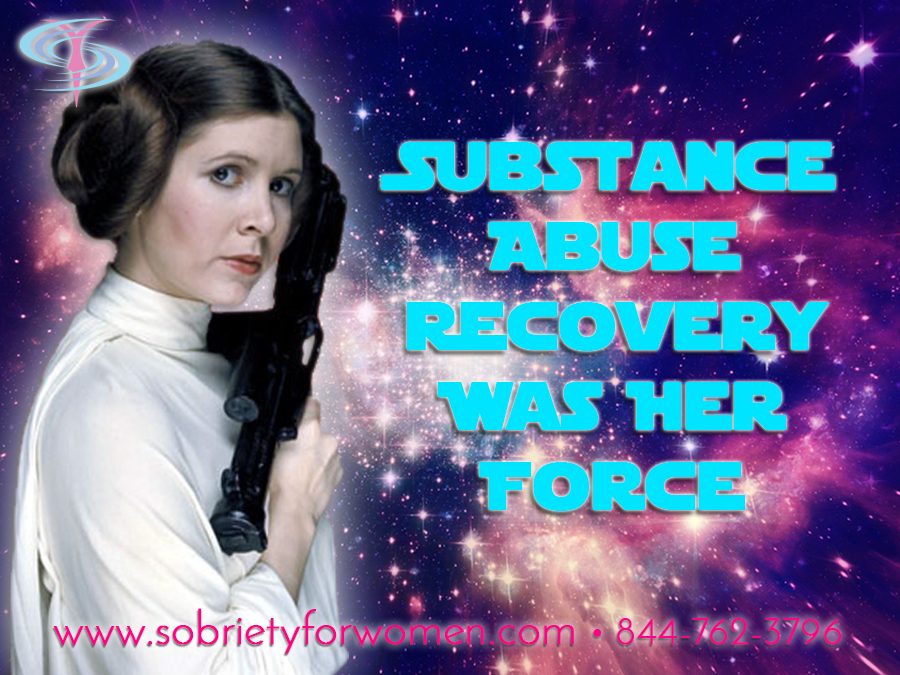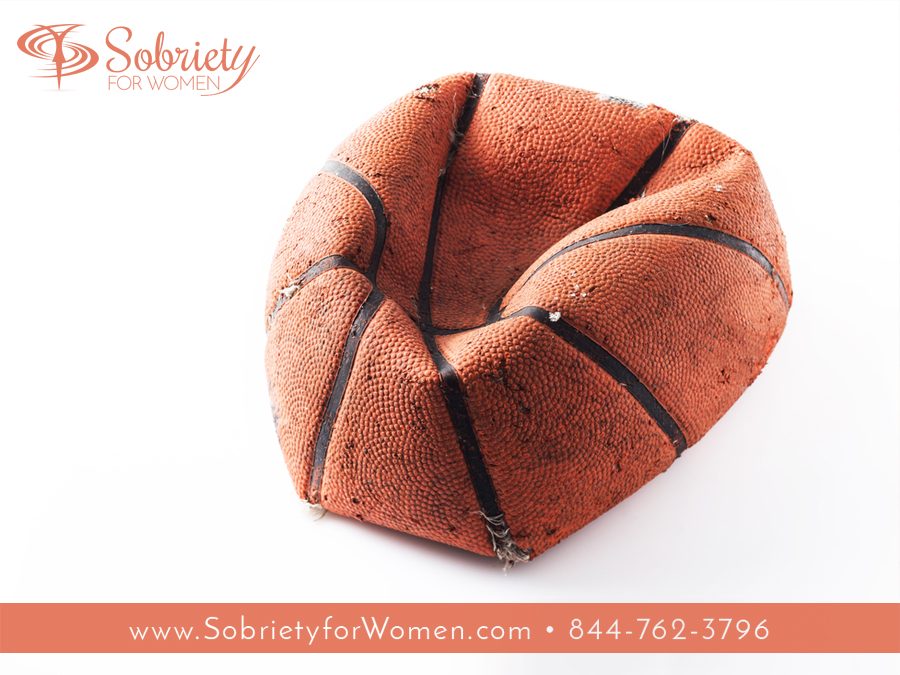
by A Women in Sobriety | Jan 26, 2017 | 12 Steps, Addiction Treatment, Blog, Drug Addiction
My Drug Rehab Was My Moment Shine
I thought doing cocaine at lunch was normal when I was 16. It actually seemed like the only normal thing about me at the time. Men attracted me I thought, but at the same time, was attracted to women. My family situation was, complicated. My Dad lived at home but my Mother and him were definitely NOT together. They never spoke and both worked late. I took care of Emily, my little sister as we the train each morning into the city for school. This is where I would get my drugs and this is where my addiction would hold me tight. So tight, I couldn’t breath. Day after day my New York City routine continued. I continued to reach out for an adult hand to hold but that continued to fail. My parents failed me too. It was not their fault, they worked so hard for Emily and I. I was my decision to turn to promiscuity, cocaine and alcohol. It was their decision to send me to drug rehab.
I attended Substance Abuse Treatment with Emily in ICU

Throughout my life I had become accustomed to heartbreak. Most of the men I dated left me because I never, “seemed into them.” Most women left me because, “I couldn’t commit.” What never left me what alcohol and drugs. I loved them and drugs and alcohol loved me. They always did what they said they were going to do, get me wasted. So for my entire 4 years in high school I got drunk. My grades slipped, my appearance downgraded from a 7 to a 3. Over the course of my use I only felt pain once, the night before I went to drug rehab. Emily my sweet 12 year-old, pigtailed, perfect little sister tried my cocaine. I was putting my coke in pixie stix in case my parents decided to be parents. Emily went into my purse and tried one. I was being admitted to into a substance abuse treatment facility in Florida before she left the hospital.
I Was Broken Alone and Addicted
I held my pillow and pretended it was Emily every night in drug rehab. Some nights I could swear the pillow hugged me. I almost killed the only person that cared about me I thought. For the first 2 days of substance abuse treatment I stayed in bed. Unable to face what I had become. Then, all of the staff of my drug rehab came into the room. They told me Emily was going to live, but if I didn’t quit drugs, I would die.
The Drug Rehab Mirror Showed Me My Soul

My therapist, my sweet angel, made me face the mirror in the bathroom of my substance abuse treatment center. She made me look into my own eyes and scream, “You need to take a chance!” Over and over I screamed, “You need to take a chance.” I screamed probably 30 or 40 times. I was crying like a baby and was pilled up on the floor like dirty towel. The therapist left room and said, “We Only Regret The Chances We Didn’t Take.”
My Life Was Saved Through Recovery
Today Emily is 18 and she will be attending Rice University in the fall. She is my best friend and was my maid of honor when I married Meaghan last spring. I’ve been sober over 6 years and it’s because one day someone told me to do one thing, Take A Chance.

by A Women in Sobriety | Jan 19, 2017 | 12 Steps, Addiction Treatment, Blog, Drug Addiction
After New Year’s Eve, I needed To Go to Addiction Rehab
It started out like any other night out. My girlfriends and I got together at my apartment to get ready to go out for New Year’s Eve. We made some mixed drinks to sip on while we did our hair and turned on Pandora. They all had a blast getting ready and barely touched their drinks. I sipped from my glass with a keen eye on theirs making sure to never let my cocktail dip lower than theirs. To supplement my buzz I kept 2 grams of coke in car and a half bottle of vodka. I’d sneak out the back door every few minutes while the rest of my friends oblivious to my covert actions, babbled and over applied eye liner inside. Looking back on last night I felt more alone inside the house with my friends than I did in the car alone with my coke and vodka. As I sat in the car in the back of mind my it felt like, this may be the last time I get high, this may be my last drink. It wasn’t dark yet, but was getting’ there and stint in an addiction rehab center seemed to be inevitable.
You See Social Drinking, I See Drug and Alcohol Abuse

I drove to the club because I needed to be able to get back out to my supply. I was in no shape to drive but I promised I would. They all sang stupid songs in the back seat whole I just tried to keep the car between the lines. My mind kept racing back to the idea of going to addiction rehab. Nothing was fun anymore. While everyone else was having fun without having to worry about pacing themselves, I was managing my drug and alcohol abuse every second of the day.
Rehab on My Mind, With A Needle in My Hand
When we walked in the club the girls all ran on the dance floor making duck faces and dancing like strippers. I took 3 shots of vodka to try and calm my heart that was pounding out of my chest. It didn’t work so I took 3 more shots and then ran to my car. Outside jimmy was waiting for me. He’s been my dealer since the incident I had with my last one ended in a rape charge. Jimmy suggested I shoot a bit of heroin to level off. Drug and alcohol abuse run in his family so he doesn’t use he just deals. Super moral guy. I sat in my car with a needle in my hand with the idea of addiction rehab
Rushing through my brain. I shrugged it off, watched a you tube video on how to shoot heroin and stuck the needle in.
I Wish I Was Dead, But I’ll Settle for Addiction Rehab

I had never shot heroin before. I’ll never do it again. I stumbled back in the club, I remember seeing my friend’s eyes looking as big a CD’s I tried to grab the bar but missed, my head hit the bar I fell to the floor and started to puke. They told me my lips were blue. They said I looked dead, they said they can’t hang out with me anymore. I had Overdosed on heroin and I wish I was dead. Tomorrow I’ll head to addiction rehab in Florida. I’m scared, nervous and sad. I’m also just a tiny bit excited. I’ve seen the site before at my sisters house so, in an effort to keep the bottle out of my hand for the next few hours I thought I would write this all down and hope it can help others struggling with Drug and alcohol abuse. Take Care.

by Sally Rosa | Dec 28, 2016 | Addiction Articles, Body Image / Eating Disorders, Drug Addiction
A Princess of Substance Abuse Recovery and Role Model
When I heard the news that Carrie Fisher, (better known to the world as Princess Leia for Star Wars) had passed away I felt like I had been punched in the gut. I was on my way to an Alcoholics Anonymous meeting at lunch, so in the car I turned on the Star Wars Theme song and began to cry. I wasn’t crying because the Princess of Alderaan, Imperial Senator and General of the Resistance had died. The reason for my tears was that one of the true, outspoken female role models of substance abuse recovery and eating disorders had passed away.
Her Death Star Was Drug Abuse and Eating Disorders
Following the 1977 smash hit “Star Wars” the 19 year-old Carrie Fisher found fame, cocaine and eating disorders. An empire of darkness that she would battle for several decades. Fisher once told an audience that her addiction had gotten so bad that even John Belushi told her to slow it down. Yes, the same man who died from an overdose of speed and coke. In Star Wars, Princess Leia showed us an example of a strong, powerful, independent women who was as beautiful and sexy as she was intelligent and confident. On set Carrie Fisher was the opposite of Leia, usually high during filming and drunk ‘til all hours of the night. The drug abuse wasn’t the only dark side of the force plaguing Carrie Fisher during the filming of Star Wars. She was under constant pressure to lose weight and the extreme ridicule gave her a depressing and debilitating eating disorder. She wouldn’t find substance abuse recovery for another 25 years.
The Force and Recovery Were Strong With This One

In 2005 when Gregory Stevens, a Republican lobbyist spent the night in her bed and died, things changed for Carrie Fisher. He died of a drug overdose and Carrie blamed her self. This event caused her to go back to rehab and she remained sober, so we think for the rest of her life. Right now it is unclear what caused her heart attack that ended the life of the Princess, but I want to believe it has nothing to do with drugs or alcohol. Carrie Fisher spoke openly about her eating disorders and substance abuse recovery. He one woman play “Wishful Drinking” brought humor, compassion and texture to the disease of addiction and she was proud to do it. Anonymity can at times make it difficult to find those in substance abuse recovery. Carrie Fisher didn’t care about anonymity she wanted to help the entire galaxy through her personal struggles.
“If You’re Scared, Stay Scared and Get Sober Anyway” –Carrie Fisher
For many young women she was their only hope. She led and incredible sober life and was at the forefront of women’s issue in substance abuse recovery, eating disorders and mental health. She made recovery fun, acceptable and healing. In her recovery Carrie Fisher gave us a new hope, fought against the dark side and became the leader the women of the galaxy needed. In her substance abuse recovery she became Princess Leia.

by A Women in Sobriety | Mar 31, 2015 | Addiction Articles, Drug Addiction
How to Have a Successful Intervention

Those who need help the most, still sick and suffering addicts and alcoholics, often don’t want it. They don’t believe they have a problem. They don’t think they need help to quit drugging and drinking. They’re scared to stop.
Whatever the reason, many addicts and alcoholics are unwilling to get better on their own. This is where interventions step in and become a truly invaluable tool in effecting long-term recovery.
That’s right folks, interventions are more than just that emotionally manipulative TV show! I’m sure I’m preaching to the choir here. I know I’ve experienced firsthand what an intervention is like.
For those of you who haven’t had that pleasure, find some tips and tricks for how to organize and run a successful intervention below!
Learn about the Drug(s) Being Abused
There’s nothing that will make an addict or alcoholic tune out faster than being lectured by someone who has no idea what they’re talking about! Can I get an amen!
So, before staging an intervention for your loved one, make sure to learn about whatever drugs they’re abusing. And I mean more than a simple Google search.
Reach out to addiction treatment centers (which you should be doing anyway!) and speak to the experts. Talk to friends and family who’ve struggled with similar addictions. You can even go to an open AA or NA meeting and ask some members for information about various drugs.
Seek Professional Help
This one should be obvious. If you’re going to stage an intervention for a friend or family member, hire a professional interventionist! They exist for a reason!
Nothing’s worse than finally gathering the courage needed to confront someone in active addiction and the confrontation going south. Emotions run high in interventions. Tears will be shed and four letter words will be uttered. Be prepared!
That’s where an interventionist becomes vital. They’ll be able to smooth any outburst and get the intervention back on track. They’ll be able to organize everything efficiently and maximize the potential of your loved one accepting help.
Have a Backup Plan
What’s the plan if your loved one doesn’t accept treatment? What are the potential consequences? What are the very real risks? How can you, as a family member, friend, or spouse, best prepare for the worst-case scenario?
This is where a backup plan becomes invaluable. Figure out the consequences if your loved one refuses treatment. Figure out what proactive measures you’ll take for yourself. These can be things like seeking individual therapy, attending a support group, or even taking legal action.
It’s important to come up with a realistic backup plan, one that you can stick to should the worst happen. Let’s say you decide that if a family member doesn’t go to treatment, you’ll cut all ties. Is that realistic and doable? What about family gatherings?
These are all things to keep in mind while formulating a backup plan.
Patience, Tolerance & Love!
Finally, we come to practicing patience, tolerance, and love. This is the glue that holds interventions together. Remember, even though anger may be running high, we love our addicts and alcoholics!
This is especially important to keep in mind because addicts are masters at manipulation! During my intervention, I tried everything imaginable to change my family’s mind. Thankfully, they’d hired an interventionist who saw right through my tears and yelling!
If my parent’s hadn’t practiced patience, tolerance, and love, I don’t know if I’d be here! So stay cool before, during, and after any intervention and remember, we can all change!

by A Women in Sobriety | Mar 10, 2015 | Addiction Articles, Drug Addiction
The Overdose Death of a Cheerleader
By: Tim Myers
While you fill out your college basketball tournament bracket this year, as you cheer on your favorite team and dunk another wing into ranch dressing, I want you to think for a minute about who you’re cheering for.

You may think you’re cheering on your favorite team, but what you’re really doing is spending time idolizing the NCAA, an institution partly responsible for the death of one of it’s own. Danielle Cogswell, a former University of Louisville cheerleader, died of an overdose in the summer of 2014.
On July 28th, the body of University of Louisville cheerleader Danielle Cogswel was found in an off-campus student-housing complex with ties to the University. The Associate Athletic Director called her death, “saddening.” I call her death criminal.
The twenty-two year old Danielle died from an overdose of heroin, amphetamines, and Xanax. Let me say that again – heroin, amphetamines, and Xanax. Based on the sheer quantity of chemicals in her system, it’s safe to say this wasn’t a one time only, experimentation overdose. Danielle had a serious problem and this is where fault can be, or should have been, pinned on the NCAA and the university.
Dangerous Student Athlete Standards
The University of Louisville is required by the NCAA to do drug screenings of all student-athletes. But guess what? Cheerleading isn’t an NCAA sanctioned sport.
These girls fling themselves over three feet in the air day in and day out. They flip, tumble and, in most cases, are the star attraction of every home and away game. They compete in competitions and their athletic skill is on par with their male counterparts.
The NCAA, though, doesn’t feel these female student athletes deserve the same level of attention to their health as the rest of the student athletes. The tennis team, swimming team, and even the badminton team are required to take drug tests.
The reason that cheerleaders are not tested is simple. They’re required to look good, not perform well.
College basketball players and football players are asked to perform at the highest level, bringing in huge endorsement contracts, advertisers, and boosters. They drug test their athletes to prevent the school from being held accountable for infractions that would impose sanctions. In turn, these would strip the university of the dollars their male athletes earn for the school. So, in the process of making sure they covered their butts from losing money, the school let Danielle slip through the cracks.
Amphetamines, Xanax and heroin promote weight loss. It’s no wonder the university doesn’t test the cheerleaders. Had the NCAA required testing for cheerleaders, Danielle might have gotten the help she needed.
Her coach Todd Sharp said that Danielle was, “an elite gymnast in the upper echelons of our program.” Apparently being an elite gymnast doesn’t mean you’re an athlete and it doesn’t mean the NCAA cares about your health.
A Disturbing Response
Danielle’s story was carried in the national press for a minute or two. It was, however, nothing compared to the coverage a male point guard or god forbid a quarterback would have gotten.

Just search Google for “college sports overdose” and you’ll see nothing for pages and pages but the story of Len Bias. Len Bias died of a cocaine overdose in 1986. Danielle died this year.
Why the NCAA doesn’t drug test cheerleaders I don’t know. Why they don’t consider cheerleading a sport I don’t know. These women are athletes and they deserve just as much care and attention as everybody else. So, will these policies change now that Danielle is gone? Nope.
When asked after Danielle’s death if the University of Louisville will increase drug prevention and education options for cheerleaders and dance teams, Christine Simatacolos, the Associate Athletic Director, responded, “We are constantly reviewing our policies to be sure we are providing the best possible support.”
Fantastic, because after one of your students dies of a drug overdose what really makes a difference is a save your own butt, politically correct answer. Saving your own butt is what brought us to Danielle’s death in the first place.
Hey, Associate Athletic Director Christine Simatacolos, this is what you should have said, “Your goddamn right we will, we will do what ever it takes to make sure this never ever happens again.”
There you go Christine. Next time a young woman dies at your school, that should be your answer.












